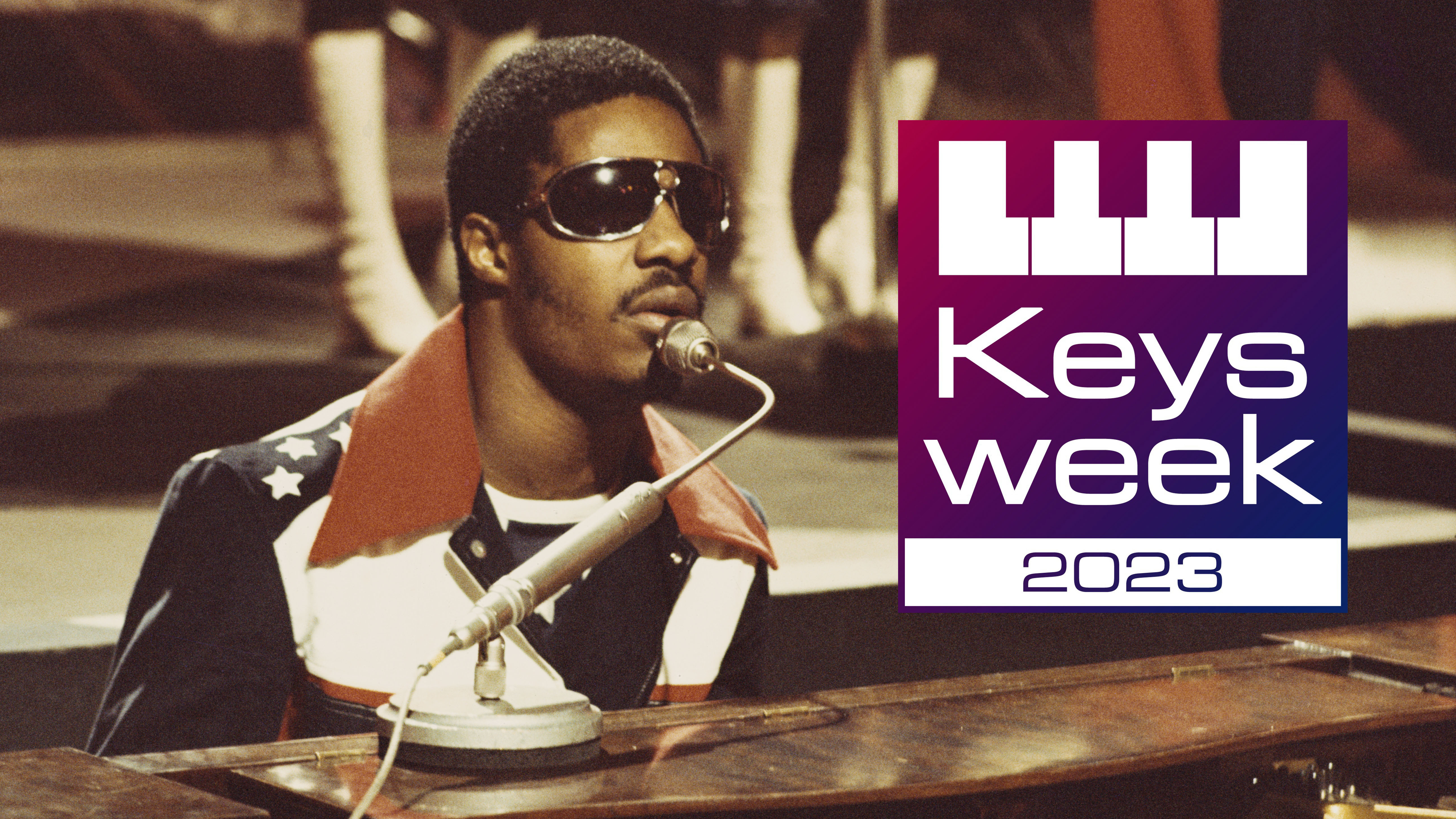
KEYS WEEK 2023: It seems like we've always had Stevie Wonder as part of our musical landscape. He started off as “Little” Stevie Wonder back in 1961, and had his first hit two years later, at the age of 13. Since that time he has grown and developed into one of the most accomplished and musically diverse pop artists of his generation.
You will, of course, know Stevie from mega-hits such as this…
Or indeed this…
But there's much more to Stevie Wonder than pop hits. His musicianship is second to none and he has mastered many an instrument in his extraordinary career. So, popularity and success aside, let’s celebrate some of Stevie's musical skills, of which there are obviously many.
A Harmonica Virtuoso
We can see from his very first hit record, Fingertips, that Stevie could play up a storm on the chromatic harmonica.
In his earlier years Stevie often featured a harmonica solo in his recordings, like 1968’s For Once In My Life. Here he is playing over changes like a jazz player, with a deep, full sound, even at the age of 18.
That same year Stevie had a hit single with Burt Bacharach’s tune Alfie, and his live performance from 2012 honouring the composer is just stunning.
A Clav Master
Whenever musicians discuss playing funk on a Clavinet, Stevie’s seminal track Superstition is referenced.
But there are plenty of other tunes to enjoy Wonder's funk clav work on. His album Music Of My Mind (1972) featured a lesser-known track called Keep On Running. Its percolating and driving clav riff is funk perfection.
Along with Superstition, the Talking Book album also features the mid-tempo tune Maybe Your Baby, which has a less-busy wah-wah clav part that carries the tune beautifully.
Innervisions (1973) has the monster clav track Higher Ground, another multi-tracked clav opus that has Stevie playing the main riff, mimicking a rhythm guitar, and adding clav fills and melodic filigrees to cover the whole track, supported only by bass and drums.
One year later, Stevie's next album Fulfillingness’ First Finale features the deeply funky You Haven’t Done Nothin’. Take notice of how varied his touch and articulation is on the keys — in his hands it is so expressive.
Badass Bass Player
Starting with Music Of My Mind, Stevie started playing almost all the instruments on his recordings, carrying this through his next four albums. He would play bass on one of his synths: early on it was the ARP 2600, then on the legendary TONTO massive modular synth system, and later moving into the MiniMoog.
Some tunes only required simple, nondescript parts, but others were a lesson in virtuoso synth bass playing. The pinnacle has to be the amazing part he created for his 1974 hit Boogie On Reggae Woman. Rythmically busy, with slides, bends and great articulation and feel, it is a tour de force performance.
The bass part Stevie came up with for Too High, from Innervisions (1973) is a stand-out part of the song.
And Stevie's bass sound and playing on So What The Fuss is the definition of Phat.
Deep Harmonic Chops
When we think of hit pop tunes and commercial music, in general we don’t expect to encounter sophisticated harmony. But Stevie absorbed so much music in his developing years, and as his career progressed he often slipped in advanced and beautiful harmonies.
A great example is the intro to Rocket Love, from his 1980 album Hotter Than July. The harmonies here showcase a surprisingly advanced jazz influence.
Another example comes from the tune Summer Soft, from Songs In The Key Of Life. The chords in the verse keep the same upper note, and vary the harmony below it in a very sophisticated fashion.
Then, the bridge of Stevie's 1974 tune Visions sounds like a cross between Chopin and Jobim, with such beautiful and logical harmony.
Give The Drummer Some
From an early age, Stevie would often take to the drums in live shows, delivering an energy-filled performance. During his golden years he is most often the drummer; in fact he opens Superstition with a groove he came up with while jamming with Jeff Beck.
A concert in Japan in 1982 has him laying down a solid groove, and this clip has him duelling with master drummer Gerry Brown in 1995, and Stevie kills it.
Ever Exploring
Stevie has always made use of new technologies as they became available. From his early adoption of the Clavinet Model C in 1968, he has always sought out new keyboards and recording technology.
We’ve already mentioned his use of analogue synths, but he was also one of the first to use sampling, on his Secret Life Of Plants project in 1979.
It is also well known that he was the impetus for Ray Kurzweil to develop the K250 keyboard system, and Wonder was always buying and using whatever latest development came out of the keyboard industry.
It’s not only keyboards that Stevie liked to explore. This great clip from 1972 showcases him running his ARP 2600 through a talk-box.
And in our next clip Stevie demonstrates it for a less funky effect.
In recent years Stevie has adopted a very cool stringed instrument called the Harpejji, and he enthuses about it at this event.
And he gave it worldwide exposure when he performed in tribute to Bill Withers at the Rock & Roll Hall of Fame in 2015.
And we may as well finish this Stevie tour with a couple of other Wonder tracks you might have heard of…
Looking for more great keyboard gear and technique articles? Get all our reviews, news, features, tutorials, tips and more at our Keys Week 2023 hub page.







